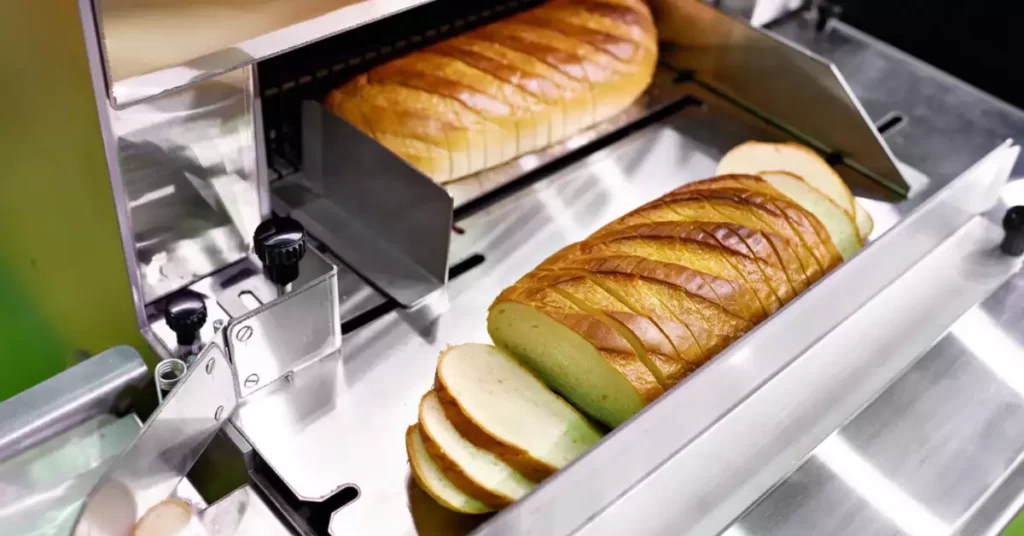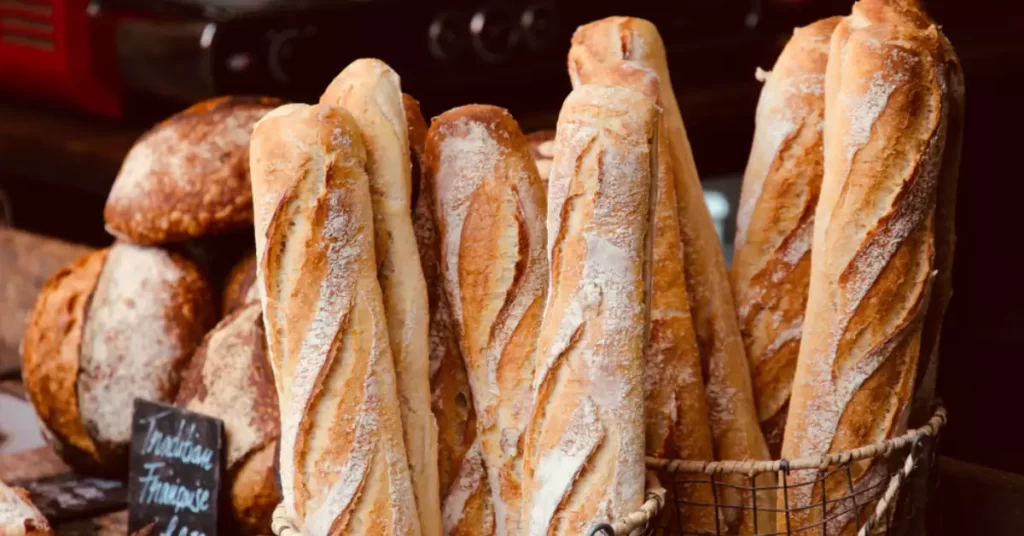Bread machines have revolutionized the way we bake bread at home, offering a convenient and efficient solution to enjoy fresh homemade loaves. They’re designed to mix, knead, and bake bread in a single unit, reducing the hassle of manual bread-making.
On average, a bread machine can last anywhere from three to ten years depending on various factors such as the quality, frequency of use, and maintenance.
Understanding the lifespan of a bread machine is crucial as it helps plan for its replacement and ensures continuous operation. Additionally, knowledge about what affects the longevity of your appliance can guide you in practicing methods that extend its service life. This article will provide an in-depth look at the factors that influence a bread machine’s lifespan, tips for maintenance, and guidance on when to consider replacing your device.
What is a Bread Machine?
Understanding the Bread Machine
A bread machine, also known as a bread maker, is a home appliance designed to simplify the process of baking bread. It automates key steps such as mixing, kneading, fermenting, and baking, which traditionally were manually intensive and time-consuming processes.
Key Features of a Bread Machine
Modern bread machines come with various features to enhance their functionality and convenience. These include multiple bread and crust settings, delay timers, and gluten-free options. Some models also offer the ability to make dough for pizza, pasta, and other baked goods.
The Evolution of Bread Machines
The first bread machine was introduced in Japan in 1986 by the company Matsushita (now Panasonic). Since then, bread machines have evolved considerably, with advancements in technology bringing more sophisticated models to the market. These advancements include programmable settings, improved kneading mechanisms, and more versatile baking options.
Factors Influencing the Lifespan of a Bread Machine
When it comes to the lifespan of a bread machine, three main factors come into play: the quality of the machine, the frequency of its use, and the level of maintenance and care.
Quality of the Bread Machine
Not all bread machines are created equal. The quality of a machine significantly influences its lifespan. Generally, high-quality machines are durable and designed to withstand regular use over many years. They often come with a higher price tag, reflecting the superior materials and craftsmanship involved in their production.
Frequency of Use
The frequency with which you use your bread machine also plays a role in its lifespan. Regularly used machines experience more wear and tear, potentially reducing their lifespan. On the other hand, a machine used occasionally or moderately may last longer.
Maintenance and Care
Maintenance and care significantly influence the lifespan of a bread machine. Regular cleaning, timely repair, and proper storage conditions can keep your machine in good working condition and extend its longevity.

Average Lifespan of a Bread Machine
In general, a bread machine can last between three to ten years. This lifespan varies based on the factors previously discussed. Some high-quality bread machines can exceed this range, provided they’re used moderately and maintained properly.
Factors Contributing to Variance in Lifespan
Factors such as the brand and model of the machine, frequency of use, and adherence to maintenance guidelines can significantly affect a bread machine’s lifespan. For example, high-end machines built with better materials and engineering will likely last longer than cheaper models.
How to Extend the Lifespan of a Bread Machine
Best Practices for Bread Machine Use
Proper usage of a bread machine can contribute to its extended lifespan. Following the manufacturer’s instructions, not overloading the machine, and using the correct type and amount of ingredients can prevent unnecessary wear and tear.
Tips for Maintenance and Cleaning
Regular maintenance is essential to keep your bread machine running efficiently for years. This includes cleaning after every use to prevent buildup of bread crumbs and other residues.
Storing Your Bread Machine
Proper storage can also prolong the life of your bread machine. Ideally, the machine should be kept in a cool, dry place, away from heat and moisture, which can damage electronic components.
Signs That Your Bread Machine May Need Replacement
Bread machines, like any appliance, don’t last forever. If you notice the machine isn’t heating properly, the bread isn’t baked evenly, or the motor is making excessive noise, these might be signs that your bread machine needs replacement.

Disadvantages of a Bread Maker
Cost Considerations
When considering purchasing a bread maker, it’s important to evaluate the cost implications. While the initial investment in a bread maker may vary depending on the brand and features, it is crucial to consider the long-term expenses.
Beyond the purchase price, additional costs may arise from ingredients, accessories, and maintenance. Furthermore, comparing the overall costs of making bread at home using a bread maker versus purchasing bread from a bakery or store is essential for financial planning.
Limited Bread Varieties
One of the limitations of bread makers is their limited versatility when it comes to producing different types of bread. While most bread makers come with preset programs for standard bread recipes, replicating specialized or artisanal bread can be challenging.
The lack of flexibility in bread varieties may restrict your ability to experiment with unique flavors, textures, and ingredients. It is important to consider your preferences and the range of bread types you intend to bake before deciding on a bread maker.
Time and Effort Requirements
Using a bread maker involves a certain time commitment and effort. These machines often have specific baking cycles that can be lengthy, typically ranging from two to four hours. It is crucial to assess your schedule and determine if you have the time available to wait for the bread to be ready.
Additionally, the preparation process, including measuring ingredients, loading them into the machine, and cleaning up afterward, requires attention and effort. While bread makers offer convenience, balancing it with the investment of time and effort is an important consideration.
Potential Quality and Texture Issues
One aspect that may be challenging with bread makers is achieving consistent quality and texture in the bread produced. Variability in loaf consistency and texture is common due to differences in mixing, kneading, and rising processes.
It can be difficult to achieve the desired crust or browning, which may impact the overall aesthetics and taste of the bread. Comparing the end result to professionally baked bread from a bakery may leave some users unsatisfied. However, it is worth noting that with practice and experimentation, you can improve your skills and overcome these challenges to a certain extent.

Choosing a Long-Lasting Bread Machine
Important Factors to Consider When Buying a Bread Machine
When buying a bread machine, consider its build quality, the brand’s reputation, and customer reviews. Check for warranties, which can provide an indication of the manufacturer’s confidence in the product’s durability.
High-Quality Bread Machine Recommendations
While specific recommendations can change over time and depend on the market, some brands have earned a strong reputation for their durability and performance. Brands like Zojirushi, Panasonic, and Breville often receive high marks from users and experts alike for their long-lasting bread machines.
FAQs
Can I make gluten-free bread in a bread maker?
Yes, many bread makers have settings specifically for gluten-free bread. However, it’s essential to use a gluten-free recipe and appropriate ingredients to achieve the desired results.
Can I use a bread maker to make dough for other baked goods?
Yes, most bread makers have a dough setting, allowing you to prepare dough for items like pizza, rolls, or pastries. Once the dough is ready, you can shape and bake it in a conventional oven.
How long does it take to make bread in a bread maker?
The time required to make bread in a bread maker can vary depending on the machine, the settings, and the recipe. On average, it takes between 3 to 4 hours, but some machines have rapid settings that can produce a loaf in about 1 hour.
Conclusion
The lifespan of a bread machine is influenced by several factors, including the quality of the machine, how often it’s used, and how well it’s cared for.
On average, a bread machine can last anywhere from three to ten years, but with proper care and maintenance, you can potentially extend this. As a user, being mindful of these factors can help you maximize your bread machine’s lifespan and get the most value from your investment.
